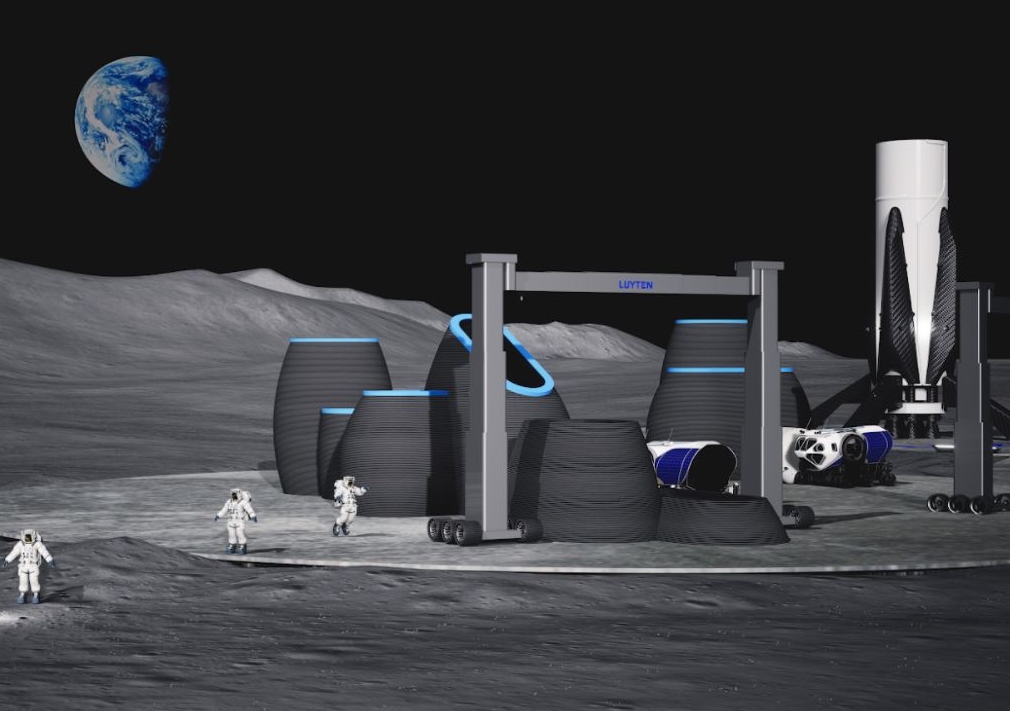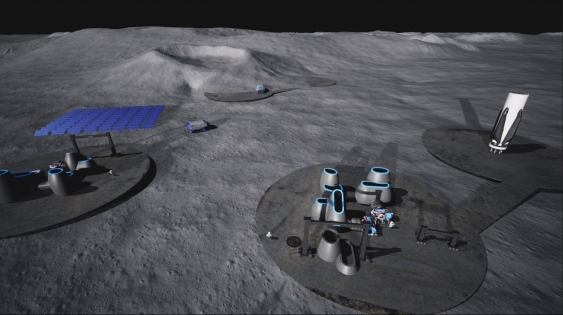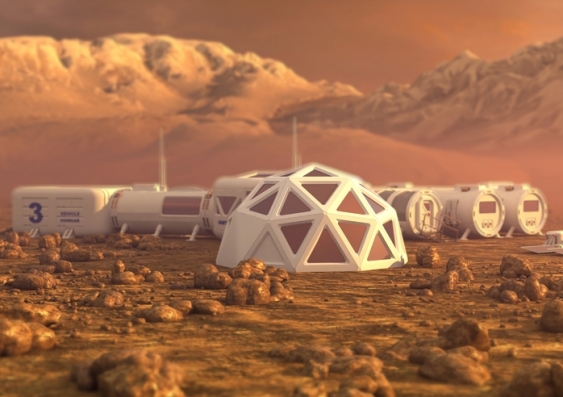Lunar architecture: small step for 3D printers, giant leap for humankind
A team from UNSW wants to use Luyten 3D printing technology to build a house on the Moon.
A team from UNSW wants to use Luyten 3D printing technology to build a house on the Moon.

3D printing has come a long way in very a short time, with products including furniture, food and even bones being manufactured by the technology. But a team from UNSW are planning to push the boundaries of 3D printing even further with a proposal that is out of this world.
UNSW Computational Design wants to use a 3D printer to build a house. But not just an ordinary house in the suburbs – one that is 385,000km away from Earth. Using the technology, they hope to one day build housing on the Moon, with a view of establishing a permanent base on the lunar surface.
Associate Professor M. Hank Haeusler, Director of Computational Design (CoDe), School of Built Environment, says it’s not as crazy as you might think.
“With the possibilities of 3D printing, we don’t need to think about housing anymore in the traditional way,” he says. “Through computational design, we can take all kinds of scientific data, feed that into a computer program and instruct a remotely controlled 3D printer to build complex geometric structures here on Earth, and one day, the Moon.”
In fact, the dream of one day building on the Moon is one step closer to becoming a reality. UNSW CoDe recently signed a memorandum of understanding with Australian building and construction company, Luyten, to begin researching and developing a specialised 3D printer capable of building on the Moon, named Platypus Galacticas.
The machine itself would be compact, using lightweight metal composites for its structure, ideal for space transportation purposes, says Luyten cofounder and CEO, Ahmed Mahil. It would be capable of expanding to produce a design of up to 9m x 12m in height and length and [once on the Moon] could be set up and controlled remotely in less than 30 minutes.
“The beauty about Luyten’s printer is it can unfold itself, like a transformer, and whatever fits underneath that frame, you can fabricate completely autonomously via satellite with the right script,” A/Prof. Haeusler says.

Establishing a lunar base would also require the development of other space-based technologies to assist the 3D printer. Image: Luyten.
A/Prof. Haeusler says the process for building remotely on the Moon would be similar to the process for building remotely on Earth, just a greater distance away.
“The Moon poses similar challenges to ones faced when building in remote areas on Earth using traditional building methods,” he says. “But by using local materials and 3D printing, you can not only overcome the challenges of cost of material and labour shortage but also fabricate much quicker and with much higher precision.”
The proposed moon housing wouldn’t be like a traditional family home, at least, in the early stages. Instead, the structure would be a protective outer skin 3D printed from the Moon’s surface material.
“The printer would print a protective shell structure on the Moon’s surface,” A/Prof. Haeusler says. “It would build a shelter around a separate lunar landing capsule the astronauts live in to form the outer layer needed to shield them from cosmic radiation, solar radiation, and meteorites.”
Read more: Space junk: Houston, we have a problem
But building on the Moon does come with a set of unique challenges. Any dwelling must be strong enough to withstand lunar quakes that can last up to 5 hours while also enduring temperature extremes between day and night. Additionally, the only local material available is lunar regolith.
When eventually deployed, the 3D printing technology would also require the assistance of other space-based technologies, including regolith-mining rovers to harvest and sinter lunar regolith into a printable form for the 3D printer.
“We can computationally look at the chemical ingredients of the regolith within the material and feed that data into the computer program that we develop to instruct the 3D printer to generate a 3D geometric structure customised to the moon’s materials conditions at the location,” A/Prof. Haeusler says.
While the team have already begun simulating lunar materials and trialling different shelter designs, the technology is still a long way from being employed on the Moon. However, if funding permits, they can develop a prototype of the lunar structures on Earth within the next three years.
“Using the NASA Technology Readiness Level, we need to do many tests and trials firstly in the lab environment where we can simulate the design and natural environment through computer modelling,” A/Prof. Haeusler says.
“Then we’ll look to build a one-to-one prototype on Earth that we can test in an environment which simulates the material conditions on the Moon – most likely in a location near Newcastle which NASA has recently approved – and we’ll continue until we get to the moon.”
He says if humans hope to one day settle on Mars, then building on the Moon is the next step.
“There is an increasing demand to explore computationally on the Moon, particularly as we look towards becoming a multi-planetary species,” he says.
“If we want to create a colony on Mars and other planets, we will want to attempt to build on the Moon first to test how things can be made in space conditions.”

Artist's impression of what a colony on Mars could look like. Photo: Shutterstock
Read more: Mars settlement likely by 2050 says UNSW expert – but not at levels predicted by Elon Musk
A/Prof. Haeusler says that doing research is also necessary to solve the problems we face on Earth. He says building on the Moon will have direct learnings that can be applied to challenges like climate change and affordable housing.
“The knowledge we generate from building on the moon can be translated directly into building housing for extreme climates such as heat or for addressing housing issues in remote indigenous communities – both topics we investigate in parallel,” he says.
Ultimately, he says that building on the Moon will also help us appreciate our life on Earth.
“Whenever you ask an astronaut about the experience of being in space and looking back onto Earth, they say that they suddenly understand how precious Earth really is.
“I think building on the Moon will give us a new perspective from that distance and perhaps a new lens to reconsider how we’re using our resources.”